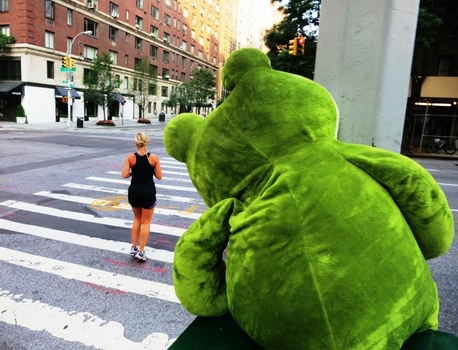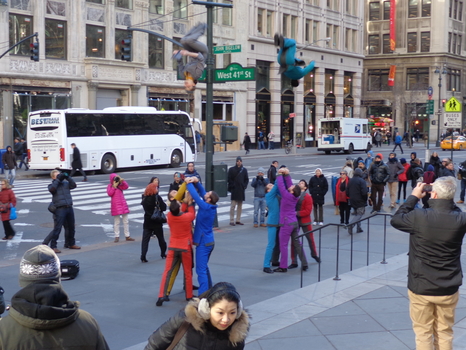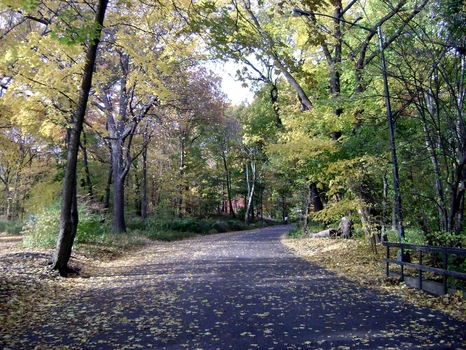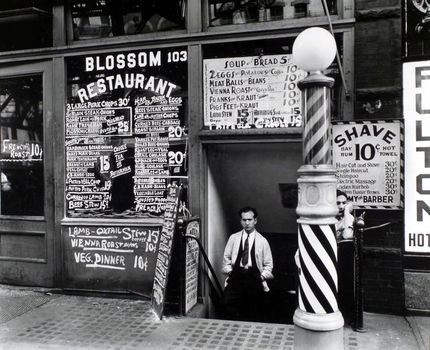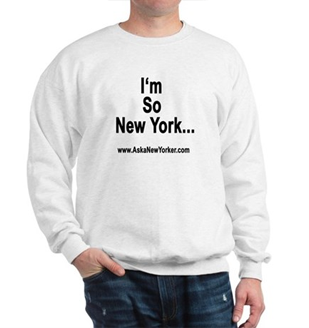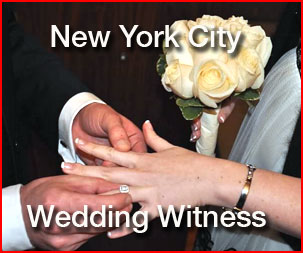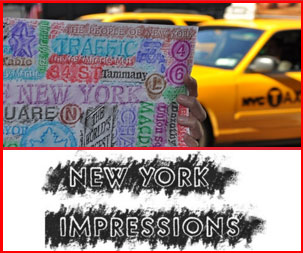By Bill Millard
AS AN OLD mathematicians’ joke goes, there are two kinds of people in the world: those who believe there are two kinds of people in the world, and those who don’t. Then there are all the subsets of that first group, like the ones who view everybody as either a Dog Person or a Cat Person. To others, the world is a mix of Grape Drinkers and Grain Drinkers, and woe unto anybody who mixes those beverages on the same night. Or maybe the great divide is between Beatles fans and Stones fans. Platonists and Aristotelians? The “reality-based community” and… well, the ones who left reality behind a long time ago? (As for Red States and Blue States, let’s not go there right now: that topic turns too many people purple.)
In New York every spring, the big line that matters is the one between Yankees fans and Mets fans. There are people who’ll cheer for both, but they’re pretty rare, and inevitably they come from elsewhere. No baseball-loving native New Yorker will admit to neutrality on this. It’s often hereditary: you’re born to a Yank-fan family and raised wearing pinstripes, or you grow up with a highly specialized understanding of the words Miracle, Marvelous, and Amazin’ – but both? It just isn’t done.
The two NYC clubs have radically different profiles, and their fans do as well. It’s not as simple as rich team vs. poor team: convicted felon and Yankee owner George Steinbrenner is baseball’s biggest spender and biggest magnet for criticism of deep-pocketed, tsunami-tempered, media-hogging executives, but the Mets regularly have one of the game’s highest payrolls as well. The difference has more to do with history, personalities, and attitude.
The Yanks fan will pick up a big restaurant check and make sure everyone sees him do it; the Mets fan will kvetch at him for leaving a skimpy tip. A fan’s relationship with the Yanks resembles a long, stable, prosperous marriage; for the Mets fan, it’s more like a stormy, passionate love affair, all mood swings and surprise. The Yanks fan has decades of history to feel proud about; for the Mets fan, long inured to hopes raised and dashed, the season that matters is always next year. (Even this season, when the Mets’ rotation features Pedro Martinez and expectations are high, their ad campaign warps time: “Next Year Is Now.”)
The Yanks: well-earned bragging rights? obnoxious triumphalism?
Partisans of Manchester United or the Montréal Canadiens might object, but the Yankees can rightfully call themselves the most successful sports franchise in world history. With their 26 World Series championships, their 33 Hall of Famers, their 15 retired numbers, and their Bronx stadium full of fabled ghosts, they practically have a playoff spot reserved every fall. True, they haven’t won the Series since 2000 (when they buried the Mets in a five-game Subway Series), but only around Yankee Stadium would five years of postseason play without a world championship be considered a slump.
Cheering for the mighty and methodical Yanks is always a safe bet, but as other teams’ fans regularly point out, it’s too easy: it’s like cheering for General Motors, or for Microsoft, or for a mustachio-twirling banker foreclosing on a starving widow’s prairie home. (There are scads of versions of this line. The original is probably by comedian Joe E. Lewis: “Rooting for the Yankees is like rooting for U.S. Steel.”) The Yanks are an easy team to admire but a hard one to love.
And for fans of other teams – not just the Red Sox (ask any New Englander about the middle name of 1978 Yankee shortstop Bucky Dent), but practically anybody – the Yanks are an object of intense lifelong loathing. Early in life, every Yanks fan learns to be thick-skinned in mixed company. Of course, most Octobers, the company gets a little less mixed, as the city’s sports bars fill up with the inevitable bandwagon riders and sunshine soldiers. Crowds of Yanks rooters, at least outside the dedicated South Bronx stadium joints like Stan’s Sports Bar, the Yankee Tavern, and Jimmy’s Bronx Café, will often have as many casual fans as true fanatics. (Mickey Mantle’s on Central Park South is an exception, for obvious reasons.)
Year in and year out, the Yanks’ dominance is so pervasive that it even seems to affect computer systems. As of this writing in late March, the webpage about the Mets at one site carries four Google-driven, thematically related ads, of which three are actually for Yankees gear.
The Mets: born to strife, serial heartbreakers, but with flashes of magic
The Mets have team colors that vibrate and clash: orange and blue, 180° across from each other on a standard color wheel. They didn’t pick these at random. There’s some history behind this: the blue is for the Brooklyn Dodgers, who were yanked cross-country by owner Walter O’Malley in 1957 to a Los Angeles ravine, and the orange represents the old New York Giants, who likewise decamped for San Francisco the next year. New Yorkers of an older generation view the loss of the city’s longtime National League teams, particularly the beloved Dodgers, as a colossal betrayal. Journalists Pete Hamill and Jack Newfield once challenged each other to write down the names of the three most evil men of the 20th century, and they independently came up with the same infamous trinity: Hitler, Stalin, and Walter O’Malley.
(In all fairness, revisionists would later try to reassign the blame to another of NYC’s archvillains, power broker Robert Moses, who shot down O’Malley’s project to replace crumbling Ebbets Field with a futuristic stadium designed by Buckminster Fuller. To Brooklyn-born historian Michael Shapiro, it’s Moses who belongs with the mad dictators for 86ing the plans that could have kept “Dem Bums” at home. But Hamill and Newfield’s famous bet has enough poetry in it to trump any literal reconstruction of the facts.)
The Mets were a phoenix that flew up from the ashes of a great public trauma, and the shadow of loss has hovered over their whole existence. For the first six years after the team’s founding in 1962 – with the likes of first baseman Marvelous Marv Throneberry whiffing, setting a longstanding record for fielding errors, and famously bungling a triple against the Cubs by forgetting to step on two of the bases – they were legendary losers, baseball’s sloppiest schlemiels. Fans who can bond with a cellar-dwelling team are a rare breed. The Mets fan who moves to Chicago often adopts the Cubs as a secondary loyalty, and vice versa.
Success comes only intermittently to the Mutts, and this makes their occasional hot season exceptionally sweet. No one who saw the 1969 “Miracle Mets” reach the Series and upset the heavily favored Orioles, or who stuck with the turbulent 1986 Mets as they took advantage of Bill Buckner’s leaky glove and turned the tables on Boston, can view those years as anything short of magical. The true Mets loyalist is a bettor on also-rans, a walker of underdogs, a devotee of St. Jude (Patron Saint of Lost Causes).
These folks bond with each other just as fiercely. Look for clusters of them in unpretentious neighborhood dives; pubs that refuse to take down their Kerry and Gore signs are a good bet. Mudville 9 and the Tribeca Tavern are hotbeds of Mets loyalists in lower Manhattan. Shea Stadium itself is too suburban in design – surrounded by parking lots – to have an adjacent strip of fan bars like those of the South Bronx, but Bobby V’s Sports Bar, former manager Bobby Valentine’s joint in the Ramada Inn at La Guardia Airport (an offshoot of his hometown restaurant in Stamford, CT), is the closest thing to an official Mets hangout.
What about out-of-towners whose heart is still out of town?
Since so many New Yorkers are here by choice, not birth, not everybody shares the local loyalties. Those puzzlingly self-flagellating people who have persisted for decades in supporting the Red Sox – and who finally collected the overdue rewards for their patience last fall – have more shelters from the abuse of Yanks fans than you might expect. The best-known “Red Sox Nation” gathering spot is the Riviera Café in the West Village, but Sox-fan cells have been discovered at the Hairy Monk at Third and 25th, the Lion’s Head near Columbia University, and Harrison’s Tavern on the Upper West Side. Pino’s restaurant on East 34th (run by Jerry Casale, a Red Sox pitcher during the late 1950s, not to be confused with Devo bassist Gerry Casale) was a Sox haven for decades. Showing the same exquisite sense of timing that fans once observed in Bill Buckner, Pino’s closed in early 2004 – just months before the Sox finally shook off the Curse of the Bambino.
Perhaps for reasons explainable by modern psychiatry, Sox fans keep a higher profile than other out-of-town teams’ partisans, but the city’s fans are a diverse lot, and the major sports bars will usually include the stray Orioles jacket or Indians cap. (Tribe fans have been legion in Washington Heights, in particular, since the days when Manny Ramirez, who starred at George Washington High School, played for Cleveland.) Good general viewing joints – plentiful screens, cheap liquids – are too numerous to name, though I’d cite Blondie’s, Time Out, and Brother Jimmy’s BBQ as personal favorites. The Back Page and the Park Avenue Country Club have their defenders, particularly among upscale types. It’s impossible to overlook midtown’s ESPN Zone, where the visual stimuli reach sensory-overload levels that would have spooked Hunter Thompson.
And in my own neighborhood, the East Village, the myriad intimate bars are now joined by the larger-scale British joint Croxley Ales, where the outdoor garden features a giant screen and a no-nonsense collection of hard-to-find drinks. Want to catch one of the local Matsuis knocking one out of the park while sipping a Shipyard Fuggles IPA in one of the Village’s well-hidden microparks? Come on down. Second round’s on me. I’ll be wearing my Mets cap – and, if they’re acting Throneberryish and losing badly, silently hoping somebody will put us out of our collective misery for a while and switch the channel to soccer.
Writer/editor/musician Bill Millard is editor-in-chief of a new publication, The Guide to NYC’s East Village. His articles on culture, architecture, and politics have appeared in Content, Icon, and other magazines; he also plays, sings, and writes with rock band Shanghai Love Motel.


